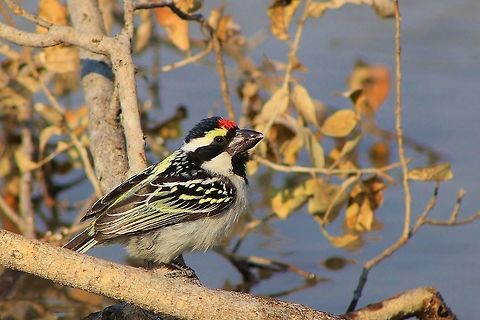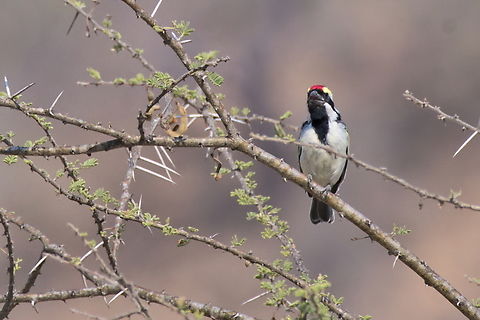
Appearance
It has a black-and-white striped head with a red forehead and yellow colouring above the eyes. It has a black bib under the chin, with a white breast and underparts.
Distribution
It primarily inhabits semi-arid savanna, as well as grassland, fynbos, agricultural areas and urban gardens, where it did not inhabit previously. With the introduction of alien vegetation, especially "Acacia" species from Australia, to regions bordering its original range, this species has been able to expand its range to these otherwise unreachable areas.It is found in Angola, Botswana, Lesotho, Mozambique, Namibia, South Africa, Swaziland, Zambia, and Zimbabwe.
Habitat
It primarily inhabits semi-arid savanna, as well as grassland, fynbos, agricultural areas and urban gardens, where it did not inhabit previously. With the introduction of alien vegetation, especially "Acacia" species from Australia, to regions bordering its original range, this species has been able to expand its range to these otherwise unreachable areas.It is found in Angola, Botswana, Lesotho, Mozambique, Namibia, South Africa, Swaziland, Zambia, and Zimbabwe.Like most other barbets, the acacia pied barbet drills holes into dead wood to create cavity nests, like a woodpecker. It lays two to four eggs from August to April, and both sexes incubate the eggs.
The acacia pied barbet has been observed taking fruit from various trees and shrubs, such as "Ficus", "Rhus" and "Phoenix reclinata", as well as "Aloe" nectar and insects.
References:
Some text fragments are auto parsed from Wikipedia.